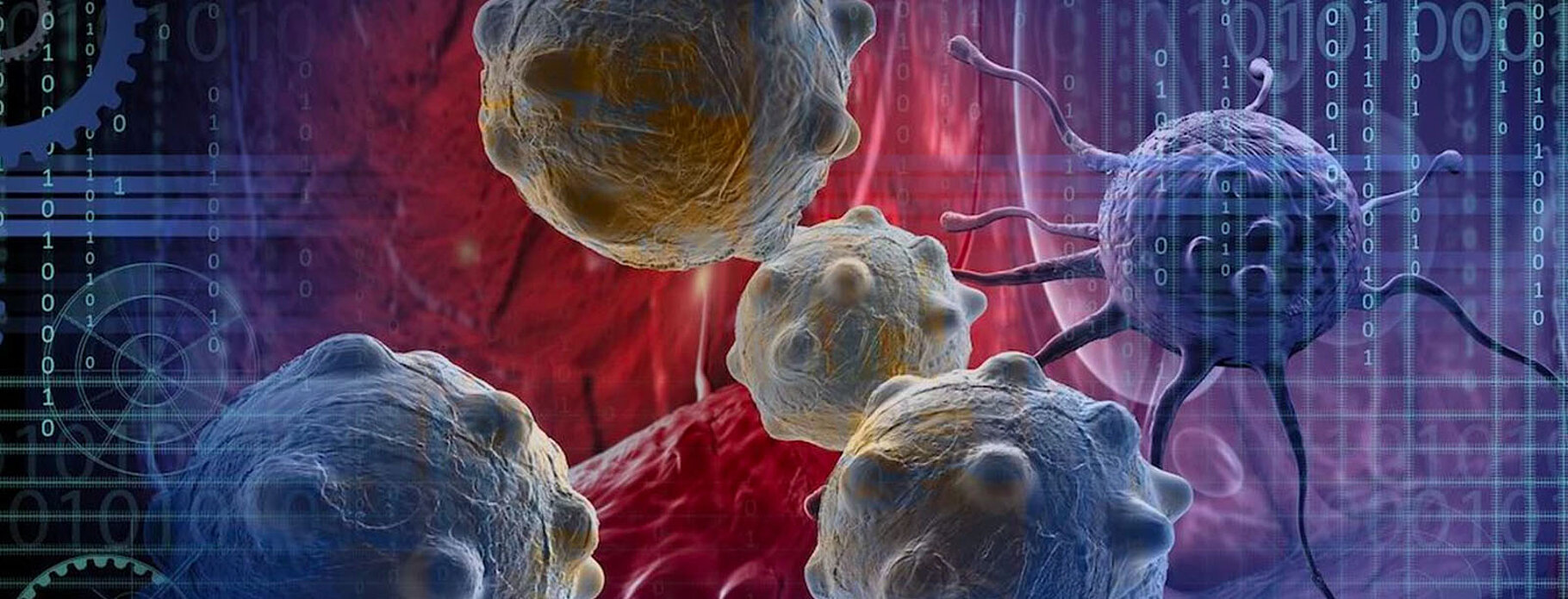Stress Signaling Pathways and the Control of Energy Homeostasis
Subgroup Leader : Karl VIVOT

Phosphorylation of proteins, lipids or metabolites in response to environmental cues is fundamentally important to evoke distinct and tightly controlled cellular responses. Impaired kinase-mediated signaling is at the heart of molecular medicine and disease pathophysiology. The main aim of our laboratory is to understand how physiologic signalling mechanisms can be perturbed in response to chronic exposure with environmental stress, and how these changes may contribute to cellular dysfunction and disease.
This principle is perhaps best exemplified in a pathologic condition known as metabolic syndrome. Metabolic syndrome consists of clinical traits including obesity, dyslipidemia, hypertension, insulin resistance and low-grade inflammation that frequently coincide in subjects exposed to excessive caloric intake and reduced physical activity. Metabolic syndrome eventually culminates in very serious illnesses such as fatty liver disease, type 2 diabetes (T2D) and cardiovascular disorders including atherosclerosis. Compelling scientific evidence suggests that stress-related mechanisms in the pancreatic cell contribute to T2D. Focusing on p38 MAPK stress signaling, we discovered that the fourth member of the p38 family, p38, controls the activity of protein kinase D (PKD) at the Golgi to control cell function and glucose homeostasis. In the following, we demonstrated that impaired PKD signaling also resulted in insulin loss in T2D through uncontrolled delivery of insulin granules to lysosomes via crinophagy. Lysosomal insulin degradation led to lysosomal recruitment and activation of mTORC1, which suppressed macro-autophagy, thereby compromising cell function in T2D. Maintaining the focus on stress kinase-mediated signaling, we recently started to center our efforts on Calcium/calmodulin-dependent protein kinase ID (CaMK1D). CaMK1D represents one of the more than 100 loci genetically associated with T2D. In this context, this kinase has been proposed to potentially promote cell dysfunction and/or to stimulate hepatic glucose output, two major mechanisms contributing to T2D. We set out to explore its in vivo functions using genetically modified mice as a model system.
Recognition of environmental stress is also a primary process involved in innate immune responses. Pathogen associated- and danger associated molecular patterns are detected by pattern recognition receptors that in turn elicit an inflammatory response. Pattern recognition receptors evolved as intracellular and extracellular sensor molecules. DNA sensing AIM2-like receptors (ALRs), NOD like receptors (NLRs) and pyrin comprise the family of intracellular inflammasome receptors. Most inflammasome receptors are highly specialized recognizing specific danger signals. In contrast, the NLRP3 inflammasome is susceptible to a whole plethora of environmental stressors and therefore attracted our attention. We recently discovered that PKD signaling at the Golgi is necessary and sufficient to activate the NLRP3 inflammasome. This work inspired us to invest a bigger part of our current and future research activity into the NLRP3 inflammasome field.
Our future work will remain focused on stress signalling in the context of metabolism and inflammation. We will use an integrative experimental approach ranging from basic biochemistry and cell biology to physiology/pathology in mice. In addition, we wish to further extend our future activity to translational medicine, targeting unique signaling mechanisms and developing innovative biomedical therapeutic tools.

Subgroup Leader : Karl VIVOT
Uncontrolled routing of insulin granules to lysosomes for degradation leading to suppression of autophagy represents a new mechanism contributing to T2D and thus represents a primary discovery of our laboratory. It will therefore be of great importance to further explore mechanisms underlying these processes. To this end, we have generated stable human β cell lines expressing markers of autophagy, lysosomes and insulin granules and we will conduct a high-throughput cellular screen using chemical libraries and/or genome wide CRISPR Cas9-mediated mutagenesis for factors that can modulate insulin granule degradation.
Through collaboration with Sanofi France, we obtained a very promising compound targeting p38 that improves cell function in diabetic mice targeting primarily lysosomal insulin granule degradation. In the future, we wish to further establish the proof of principle that inhibition of granule degradation in β cells improves their function in T2D, thus preparing the ground for eventual early phase clinical studies. The above-described chemical screen will provide more potential targets and/or compounds to be explored in this context. We also want to understand how insulin granule degradation is enhanced upon chronic nutrient overload.
Activation mechanisms of the NLRP3 inflammasome are very complex. But a unique and perhaps most topical feature of NLRP3 is its recruitment to endomembranes during inflammasome activation. The fundamentally new idea here is that NLRP3 inflammasome activators converge into changes in endomembranes that are primarily sensed by NLRP3. Membrane binding might also represent an important step leading to oligomerization of NLRP3. Two main sites of localization have been suggested: NLRP3 recruitment to mitochondria-associated endoplasmic reticulum membranes and most recently recruitment to vesicles resulting from trans-Golgi network (TGN) dispersion. We are using state-of-the-art microscopic imaging to study NLRP3 inflammasome activation in space and time in living macrophages. Using these techniques, we would like to answer what makes endomembranes recruiting NLRP3 and how NLRP3 inflammasome activators affect endomembrane composition? We also recently performed genome wide CRISPR Cas9 screens in macrophages to identify new regulators of NLRP3 inflammasome activation some of which we are currently validating. Patients with mutations in the NLRP3 gene develop an auto-inflammatory disease called cryopyrin associated periodic syndrome (CAPS). However, some mutations are rather silent and only in response to skin irritation and cold exposure autoinflammation can occur. We have initiated a project in which we investigate the question whether mechanical stress could evoke NLRP3-mediated inflammation.
Current collaborations
Antonella de Matteis (TIGEM, Naples, Italy)
Juan S. Bonifacino (NIH, Bethesda, USA)
Serge Luquet (University of Paris, Paris, France)
Ruben Nogueiras (CiMus Santiago de Compostela)
Izabela Sumara (IGBMC, Illkirch, France)
Yansheng Liu (University of Yale, New Haven, USA)
Previous collaborations
Ruedi Aebersold (ETH Zurich, Switzerland)
Patrik Rorsman (University of Oxford, UK)
Jiahuai Han (Xiamen University, China)
Lukas Sommer (University of Zurich, Switzerland)
Carmine Settembre (TIGEM, Naples, Italy)
Yannick Schwab (EMBL Heidelberg, Germany)
Felix T. Wieland (ZMBH Heidelberg, Germany)
Fritz Krombach (LMU Munich, Germany)
Alexander Zarbock (University of Münster, Germany)
Robert Schneider (Helmholtz Zentrum, Munich, Germany)
Thomas Baumert (University of Strasbourg, France)
Christian Wolfrum (ETH Zurich, Switzerland)

The team of Roméo Ricci has been awarded a Chair of Excellence in Biology/Health by the France 2030 program. This grant provides funding for a…
Read more
Article in a journal
Kidney360
Article in a journal
International Journal of Molecular Sciences ; Volume: 24 ; Page: 10649
Article in a journal
Nature Metabolism ; Volume: 5 ; Page: 1045-1058
Article in a journal
Nature Immunology ; Volume: 24 ; Page: 30-41
Article in a journal
Science Immunology ; Volume: 8 ; Page: adf4699
Article in a journal
EMBO Molecular Medicine ; Volume: 14
Article in a journal
Nature Communications ; Volume: 12 ; Page: Article number: 5862
Article in a journal » Review article
Autophagy ; Volume: 17 ; Page: 1-382
Article in a journal
Cell Reports ; Volume: 35 ; Page: 109129
Article in a journal
Journal of Molecular Biology ; Volume: 432 ; Page: 1494-1513